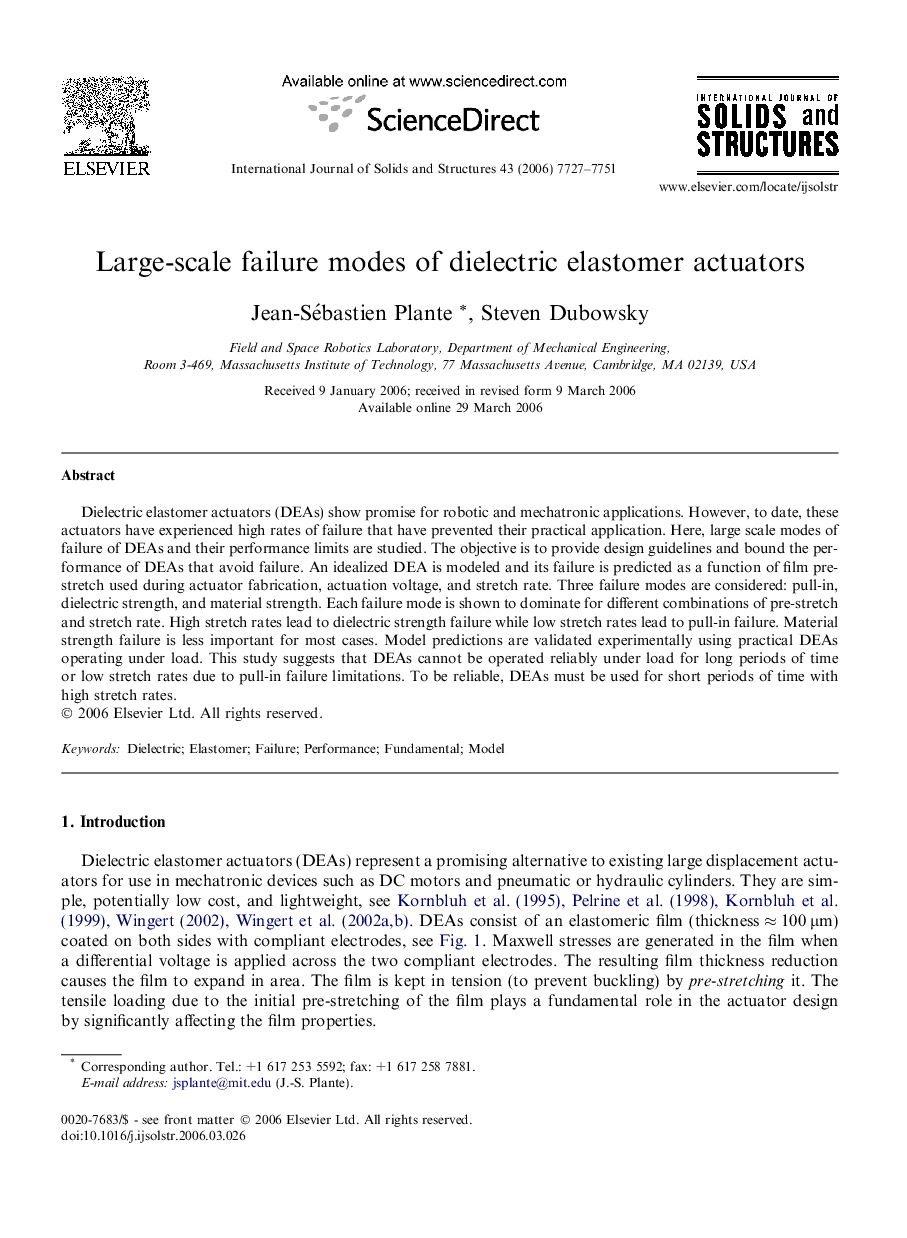| Article ID | Journal | Published Year | Pages | File Type |
|---|---|---|---|---|
| 280028 | International Journal of Solids and Structures | 2006 | 25 Pages |
Dielectric elastomer actuators (DEAs) show promise for robotic and mechatronic applications. However, to date, these actuators have experienced high rates of failure that have prevented their practical application. Here, large scale modes of failure of DEAs and their performance limits are studied. The objective is to provide design guidelines and bound the performance of DEAs that avoid failure. An idealized DEA is modeled and its failure is predicted as a function of film pre-stretch used during actuator fabrication, actuation voltage, and stretch rate. Three failure modes are considered: pull-in, dielectric strength, and material strength. Each failure mode is shown to dominate for different combinations of pre-stretch and stretch rate. High stretch rates lead to dielectric strength failure while low stretch rates lead to pull-in failure. Material strength failure is less important for most cases. Model predictions are validated experimentally using practical DEAs operating under load. This study suggests that DEAs cannot be operated reliably under load for long periods of time or low stretch rates due to pull-in failure limitations. To be reliable, DEAs must be used for short periods of time with high stretch rates.
